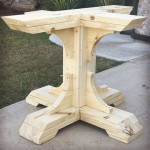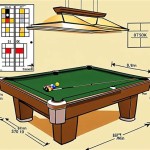Vintage Kitchen Table and Chairs: A Journey Through Time and Style
The kitchen, often considered the heart of the home, has evolved significantly over the decades. Central to this space is the kitchen table and chairs, a gathering place for meals, conversations, and shared experiences. Vintage kitchen table and chair sets offer a unique glimpse into the past, reflecting not only the design aesthetics of their era but also the social and cultural contexts in which they were created. These pieces are more than just furniture; they are tangible links to history, bringing character, charm, and a touch of nostalgia to modern homes.
The term "vintage" typically refers to items that are at least 20 years old but are not considered antique (which are generally over 100 years old). Vintage kitchen furniture spans a wide range of styles, materials, and craftsmanship, reflecting the trends and innovations of different periods. From the sleek lines of mid-century modern designs to the ornate details of earlier styles, vintage kitchen table and chairs offer a diverse array of options for those seeking to add a unique touch to their kitchen decor.
The appeal of vintage kitchen furniture lies in several factors. First, the quality of materials and construction often surpasses that of mass-produced modern furniture. Second, vintage pieces possess a unique character and history, adding personality and individuality to a space. Finally, incorporating vintage furniture into a modern home can create a captivating contrast, blending the old and the new to create a truly distinctive aesthetic.
Identifying Key Characteristics of Different Eras
Understanding the characteristics of different eras is crucial when selecting vintage kitchen table and chairs. Each period boasts distinct design elements, materials, and construction techniques that contribute to its unique charm. By familiarizing oneself with these key features, it becomes easier to identify and appreciate the nuances of each style.
One prominent era is the Art Deco period, spanning the 1920s and 1930s. Art Deco kitchen furniture often features geometric shapes, bold colors, and luxurious materials like chrome, Bakelite, and exotic woods. Tables may have rounded edges and streamlined silhouettes, while chairs may incorporate stylized patterns and decorative details. The overall aesthetic is one of glamour, sophistication, and modernism.
Moving into the mid-century modern era (roughly the 1940s to the 1960s), the focus shifted towards functionality, simplicity, and organic forms. Mid-century modern kitchen tables and chairs often feature clean lines, tapered legs, and a minimalist aesthetic. Materials like wood, Formica, and metal were commonly used, and bright colors and bold patterns added visual interest. Designers like Eames and Saarinen created iconic pieces that remain highly sought after today.
The 1970s brought a more eclectic and casual style to kitchen furniture. Earth tones, natural materials, and a focus on comfort were prevalent. Kitchen tables may have featured butcher block tops or tile inserts, while chairs often incorporated woven materials, rattan, or vinyl upholstery. This era reflects a shift towards a more relaxed and informal lifestyle.
Victorian era kitchen tables and chairs, while perhaps less common, exude a sense of grandeur and opulence. These pieces often feature ornate carvings, rich wood finishes, and intricate detailing. Chairs may be upholstered in plush fabrics like velvet or brocade, adding to the luxurious feel. Victorian furniture is a statement piece, bringing a touch of old-world elegance to the kitchen.
Farmhouse style is another popular vintage aesthetic, characterized by its rustic charm and focus on practicality. Farmhouse kitchen tables are typically made of solid wood, often with a distressed finish. Chairs are usually simple and sturdy, with a focus on comfort and durability. This style evokes a sense of warmth, tradition, and rural living.
Materials and Construction: Assessing Quality and Durability
The materials and construction of vintage kitchen table and chairs are critical factors in determining their quality, durability, and overall value. Understanding the common materials used in different eras and the construction techniques employed can help one assess the longevity and potential restoration needs of a piece.
Solid wood has been a staple in furniture construction for centuries. Oak, maple, walnut, and pine are common choices for kitchen tables and chairs. Solid wood pieces are generally more durable and can withstand years of use. However, they may also be susceptible to warping, cracking, or damage from moisture and pests.
Veneer, a thin layer of wood applied over a less expensive core material, was often used to create a more decorative surface. While veneer can be aesthetically pleasing, it is more prone to damage than solid wood. Scratches, chips, and water damage can easily compromise the veneer layer.
Metal, particularly chrome and steel, became increasingly popular in the mid-20th century. Metal furniture is known for its durability and resistance to wear and tear. However, it can also be prone to rust and corrosion, especially in damp environments.
Formica, a durable laminate material, was widely used for kitchen tabletops and countertops during the mid-century modern era. Formica is resistant to stains, heat, and scratches, making it a practical choice for high-use areas. However, it can be difficult to repair if damaged.
Upholstery plays a significant role in the comfort and appearance of vintage kitchen chairs. Fabric choices ranged from durable vinyl and Naugahyde to more luxurious options like velvet and brocade. The condition of the upholstery is a key factor in assessing the overall condition of the chairs. Tears, stains, and fading can detract from the value and necessitate reupholstering.
The construction techniques used also influence the durability and longevity of vintage kitchen table and chairs. Dovetail joints, mortise and tenon joints, and sturdy frames are indicators of quality craftsmanship. Loose joints, wobbly legs, and signs of poor construction can indicate potential structural problems.
Restoration and Care: Preserving Vintage Charm
Restoring and caring for vintage kitchen table and chairs is essential for preserving their beauty and extending their lifespan. Whether one is looking to restore a piece to its original glory or simply maintain its current condition, proper care and attention are crucial.
Before undertaking any restoration work, it is important to assess the condition of the furniture carefully. Identify any structural issues, such as loose joints or damaged wood. Note any cosmetic imperfections, such as scratches, stains, or faded finishes. Consider the overall value and historical significance of the piece to determine the appropriate level of restoration.
Cleaning is a fundamental aspect of vintage furniture care. Use a mild soap and water solution to gently clean wooden surfaces. Avoid harsh chemicals or abrasive cleaners, which can damage the finish. For upholstery, spot clean stains with a gentle fabric cleaner. Consider professional cleaning for delicate or heavily soiled fabrics.
Repairing structural issues is often necessary to ensure the stability and safety of vintage kitchen table and chairs. Tighten loose joints with wood glue and clamps. Replace broken or missing parts with matching components. If the damage is extensive, consider consulting a professional furniture restorer.
Refinishing wood furniture can restore its original luster and protect it from further damage. Remove the old finish with a chemical stripper or sandpaper. Sand the wood smooth and apply a new stain or finish. Choose a finish that is appropriate for the type of wood and the desired aesthetic.
Reupholstering chairs can transform their appearance and improve their comfort. Remove the old upholstery and padding. Repair any damage to the frame. Cut new fabric and padding to fit the chair. Secure the new upholstery with staples or tacks. Choose a fabric that complements the style of the chair and the overall decor of the kitchen.
Regular maintenance is essential for preserving the beauty and longevity of vintage kitchen table and chairs. Dust furniture regularly with a soft cloth. Avoid placing furniture in direct sunlight or near sources of heat, which can cause fading or warping. Use coasters and placemats to protect surfaces from spills and scratches. Apply furniture polish periodically to maintain the finish and prevent drying.
By understanding the characteristics of different eras, assessing the quality of materials and construction, and implementing proper restoration and care techniques, one can ensure that vintage kitchen table and chairs remain a cherished part of the home for generations to come. These pieces are not just furniture; they are tangible reminders of the past, adding character, charm, and a touch of history to the modern kitchen.

50 S Table Retro Kitchen Tables Settings Vintage

Vintage Kitchen Table And Chairs Chrome 1950 S Formica Teal Dinette Sets Retro Tables

Original Vintage Kitchen Table Fifties With New Blue Chairs Com

23 Red Dinette Sets Vintage Kitchen Treasures Retro Renovation

Bel Air American Style Retro 50s Diner Furniture Kitchen Table Chairs

217 Vintage Dinette Sets In Reader Kitchens Retro Renovation Kitchen Tables Table

Retro Table Chair Set Mid Century Vintage Kitchen Apartment Size

Dinette Sets Retro Renovation

Antique Dining Table Chairs Vintage Distressed Painted

Vintage Formica Kitchen Table And Chairs








